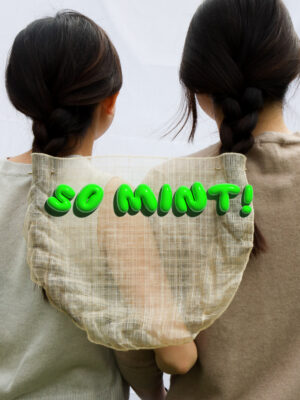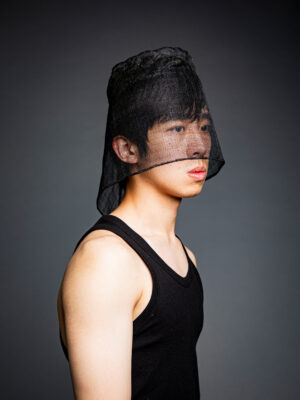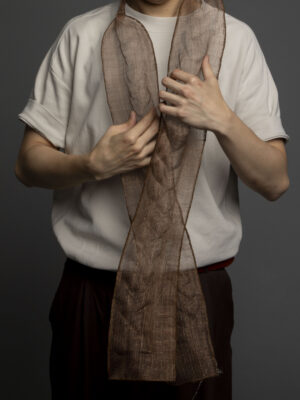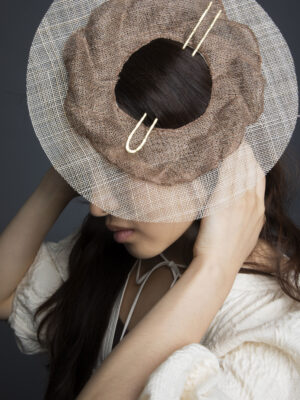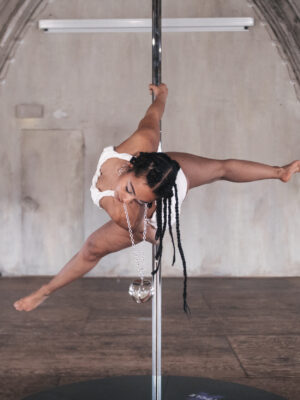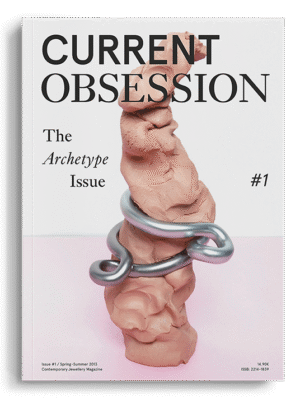Sunho Jung is a recent graduate from the Jewellery Design course at Central Saint Martins. Her work explores the relationship between traditional Korean culture and contemporary jewellery.
In Between the Gat and the Braid, she focused on the gat, a traditional Korean hat worn by men during the Joseon dynasty, and traditional women’s hairstyles, both rich in cultural and social symbolism. Sunho combined these elements to create contemporary, unisex jewellery that honours tradition with a fresh perspective. Using Sinamay, a lightweight, transparent fibre made from banana plants, she captured its refined elegance in a modern and delicate way.
Rooted in cultural research and material experimentation, the project reflects her broader design philosophy: ‘Through this project, I wanted to show that tradition is not something fixed in the past, but something that can grow, evolve, and inspire us today. I hope to continue exploring how cultural heritage can be transformed into new design languages, and how jewellery can be a meaningful bridge between history and the present’.
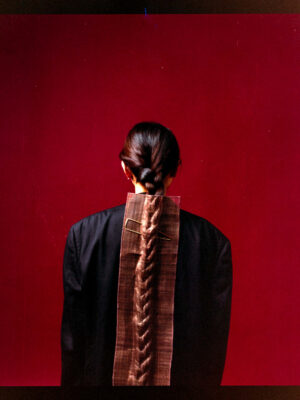
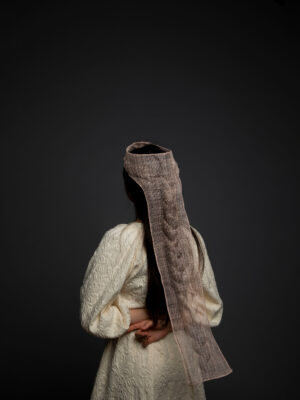
Current Obsession:
Suhno Gun: I feel a growing distance between younger generations and Korea’s traditional values, forms, and aesthetics. My aim was to show that tradition is not something fixed or outdated; it can evolve, transform, and continue to inspire. By combining the gat, once a symbol of male etiquette and Confucian ideals, with the symbolic braided hairstyles historically worn by women, I explored a wider range of forms and meanings. This pairing allowed me to question fixed ideas of gender and social status while paying homage to the cultural weight both elements carry.
Inspired by exhibitions like ‘The Touch That Connects Time’ at Deoksugung Palace, the work invites reflection on Korea’s fading customs and the relevance they still hold, not as relics of the past but as living traditions capable of adapting to contemporary issues such as identity, gender, and belonging. Connecting past and present became a way to ask: What parts of our culture do we carry forward, and how do we make them meaningful again today?
CO:
SG: One of the most unexpected influences on my practice has been visiting traditional Korean heritage sites and exhibitions as an adult, especially after spending time abroad. I didn’t expect that these cultural experiences, often familiar from childhood but overlooked, would later resurface with new meaning in my creative practice. Seeing traditional Korean objects, garments, and rituals through the lens of contemporary design opened up new ways for me to reflect on identity, history, and material expression.
Also, working with unfamiliar materials like Sinamay, traditionally used in millinery, unexpectedly shaped my design language. Its transparency and structure helped me rethink the visual qualities of Korean objects like the gat, and pushed me to consider how material alone can communicate ideas of lightness, fragility, and presence. In the end, it was this combination of cultural memory, physical space, and material experimentation, rather than a single person or discipline, that unexpectedly guided and reshaped my practice.
‘The more I worked with these traditional forms, the less distant they felt. I stopped seeing heritage as something I had to follow, and started seeing it as something I could shape.’
SG: Yes, my work is deeply rooted in a cultural context that feels very personal to me as a Korean. While studying and living abroad, I began to see these traditions, things I once took for granted, with new eyes. Objects like the gat or traditional hairstyles, which I grew up seeing in books, dramas, or family photos, started to carry a deeper emotional weight. I felt a growing desire to understand their historical meaning and explore how they could be reimagined in a contemporary context.
Over time, I noticed how easily these cultural symbols were fading from everyday life in Korea, especially among younger generations. This sense of distance, even within my own identity, became something I wanted to respond to through making. Reinterpreting traditional forms as wearable, contemporary objects became a way to reconnect with my heritage — not out of nostalgia, but as a meaningful part of the present.
Through material, form, and symbolism, I try to reflect the quiet beauty, restraint, and values often found in Korean aesthetics. It’s not always something that can be fully explained, but rather something felt — especially by those who share this background. My work is a personal response to that feeling of wanting to hold onto something intangible yet deeply familiar, and give it new life through design.
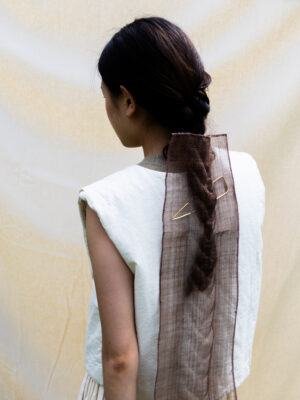
Instagram @miliminano
All images courtesy of the artist.
Our annual series SO MINT! is back, shining a spotlight on the rising talents of fresh graduates in fashion, jewellery, and design from around the world.
Are you a recent graduate with remarkable work to share? Submit your portfolio via this link!
Submissions are open until the end of August 2025.
If you have any questions, please don’t hesitate to contact us via veronika@current-obsession.com.
